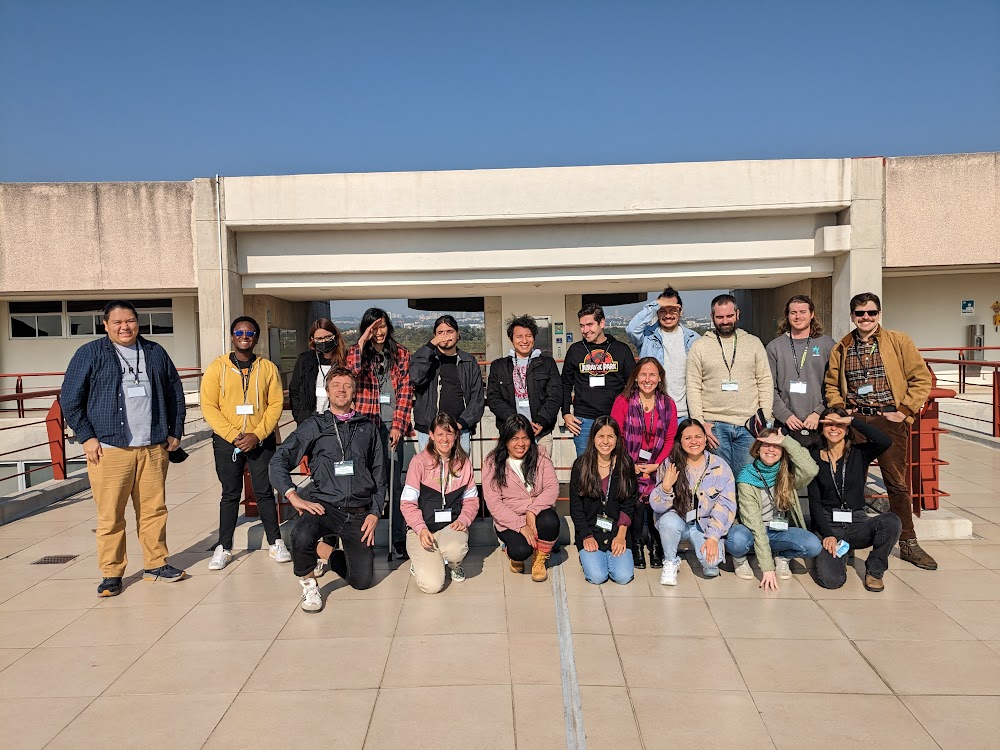Welcome to CompPhylo 2023 - Mexico City Edition
Workshop Location and Date
January 13, 2023 (10h-14h + break)
SSB Standalone Meeting (2023)
TBD, UNAM CU Campus
CDMX
Workshop Synopsis/Goals
Phylogeographic Temporal Analysis (PTA): Model based comparative phylogeography with machine learning
Species that occupy the same geographic extent (i.e. ‘co-distributed species’) are subject to the same changes in environment and geography (e.g. cycles of glaciation, uplift of mountain ranges, reduction or expansion of suitable habitat due to changing precipitation regimes, etc.). Estimating the extent to which co-distributed species undergo similar evolutionary, demographic and distributional histories as a result of changes in shared abiotic conditions is the domain of comparative phylogeography (Arbogast & Kenagy, 2001; Gutiérrez-García & Vázquez-Domínguez, 2011; Edwards et al., 2022). Originally, statistical comparative phylogeographic methods emerged during the era of single-locus data (e.g.Hickerson et al., 2007) and soon expanded to account for multi-locus data on the order of handfuls to dozens of loci (e.g. Huang et al., 2011; Overcast et al., 2017). Such methods, while statistically robust and feasibly applied to Sanger-like data, are computationally intractable in the face of contemporary massive next-generation sequencing datasets (e.g. RADSeq; Andrews et al., 2016), which can often encompass thousands to tens of thousands of independent loci.Accordingly, new comparative phylogeographic methods have been developed to perform inference on such RADSeq or even whole genome-scale datasets by utilizing either suites of summary statistics (Gehara et al., 2017) or aggregated (joint) site frequency spectra (Xue & Hickerson, 2017). In this proposed workshop we will present one such method, Phylogeographic Temporal Analysis (PTA), which combines advances in the computational performance of large-scale (genome-wide) coalescent simulations (Kelleher et al., 2016; Kelleher & Lohse, 2020) with the power of machine learning inference (e.g. scikit-learn; Pedregosa et al., 2011), all within a simple, user friendly, and reproducible python-based jupyter notebook environment. Given genome-scale data for multiple individuals of multiple co-distributed species, PTA implements a hierarchical simulation-based machine learning approach to estimate the degree of concordance in demographic response (e.g. the number of co-expanding or co-contracting species), as well as the timing and magnitude of such shared demographic changes.
The learning outcomes of this workshop will include: 1) understanding the fundamental motivation for comparative phylogeographic inference; 2) identifying and manipulating key parameters of comparative phylogeographic models; 3) simulating subgenomic or genomic data for multiple co-distributed species; 4) using supervised machine learning for model classification and parameter estimation. In this workshop we will proceed through all the steps necessary to analyze a typical comparative phylogeographic dataset within a jupyter notebook environment,allowing researchers to generate documented and easily reproducible workflows, and providing a simple interface for generating publication-ready plots of results. This workshop will be geared toward practicing field biologists with little or no computational experience. Workshop attendees will need to bring a laptop computer.
Organisers/Instructors
- Isaac Overcast, University of Maine
- Ella Vázquez-Domínguez, Instituto de Ecología, UNAM
- Arianna Kuhn, Virginia Museum of Natural History
Schedule/Workshop Structure
- Background on comparative phylogeography [1 hr]
- Why do we do this? How?
- What kinds of questions can we ask and answer?
- Examples from the literature.
- Running PTA Simulations [1.5 hr]
- Running simulations with the PTA comparative phylogeographic model
- Reviewing some of the key model parameters and outputs.
- Hands-on w/ ML Inference [1.5 hr]
- Machine learning inference using simulations and toy empirical data.
CompPhylo Mexico City 2023 Group Photo

